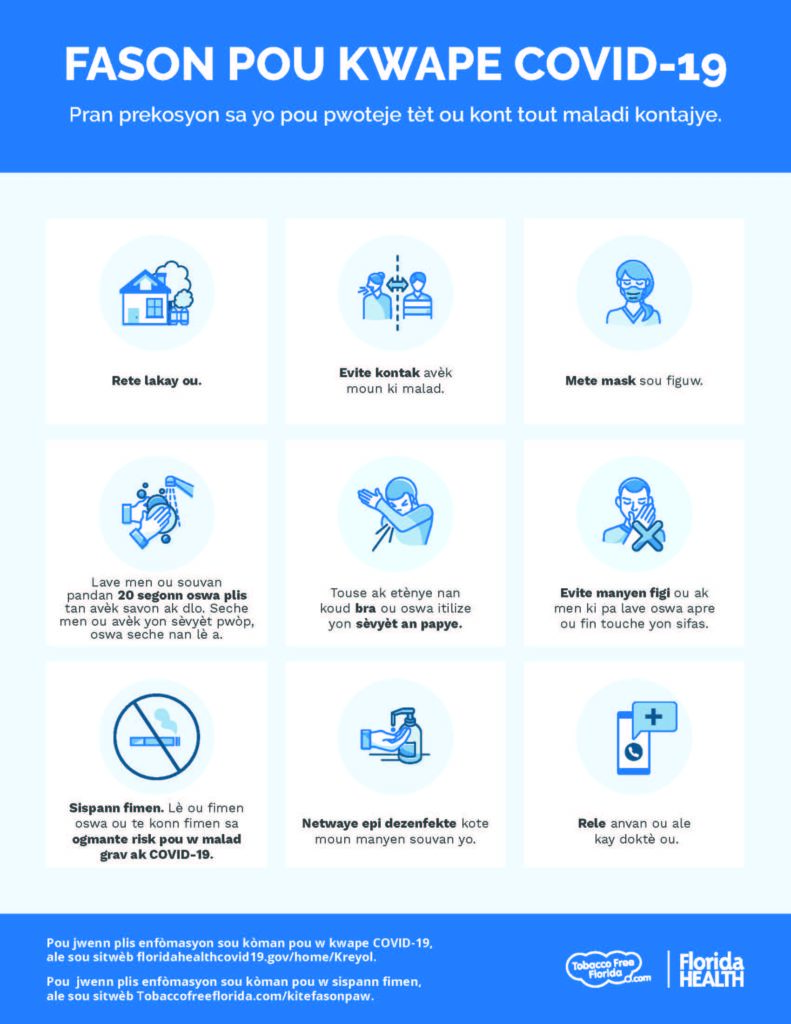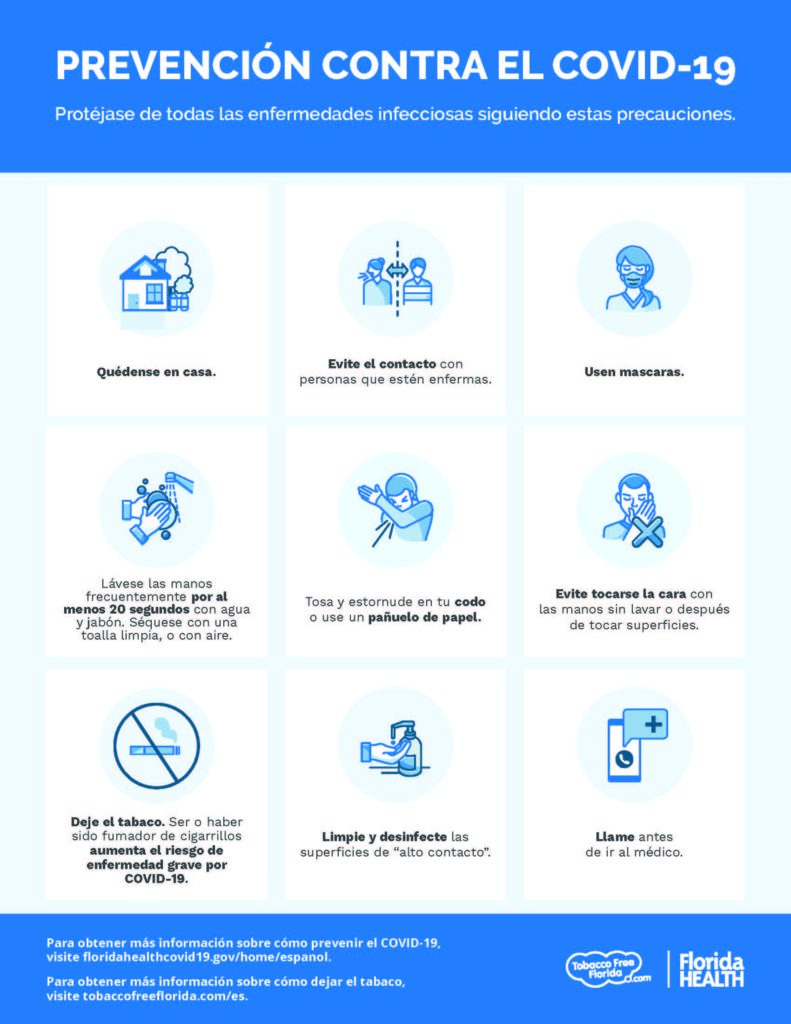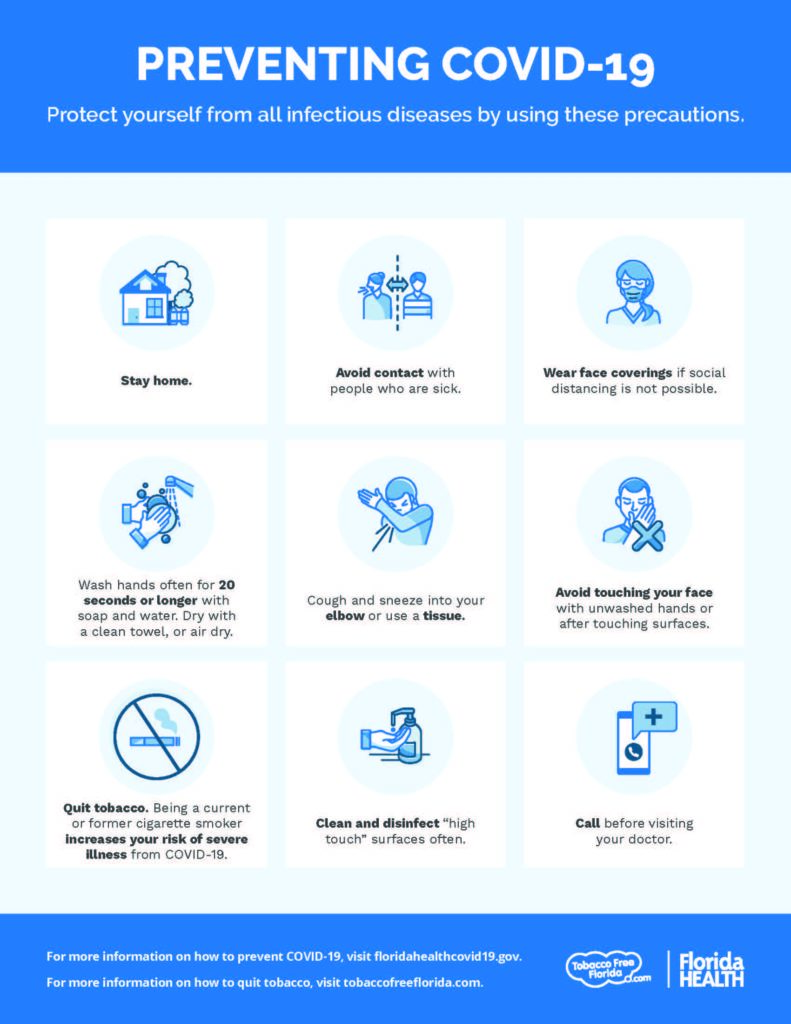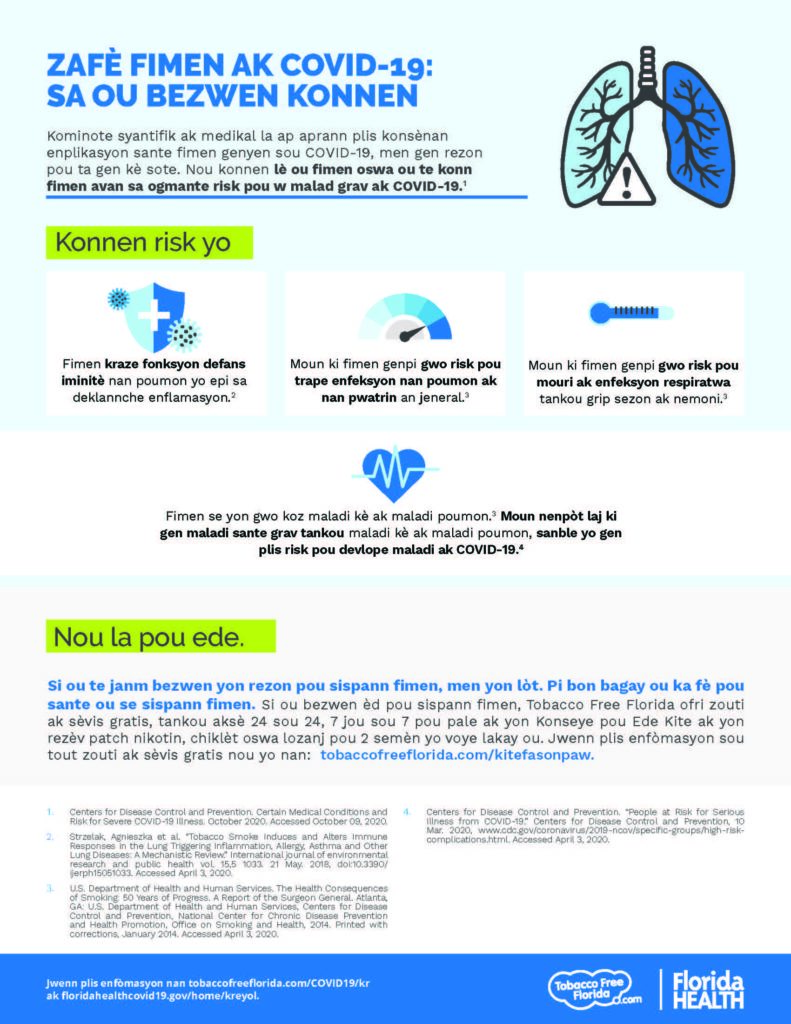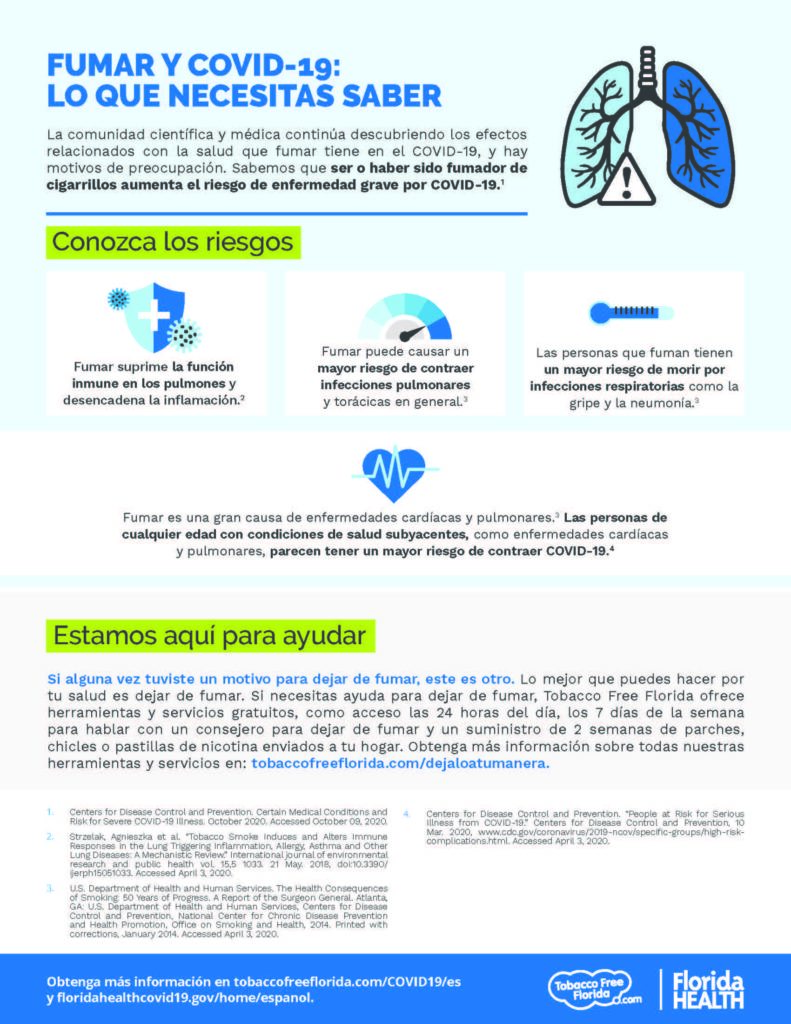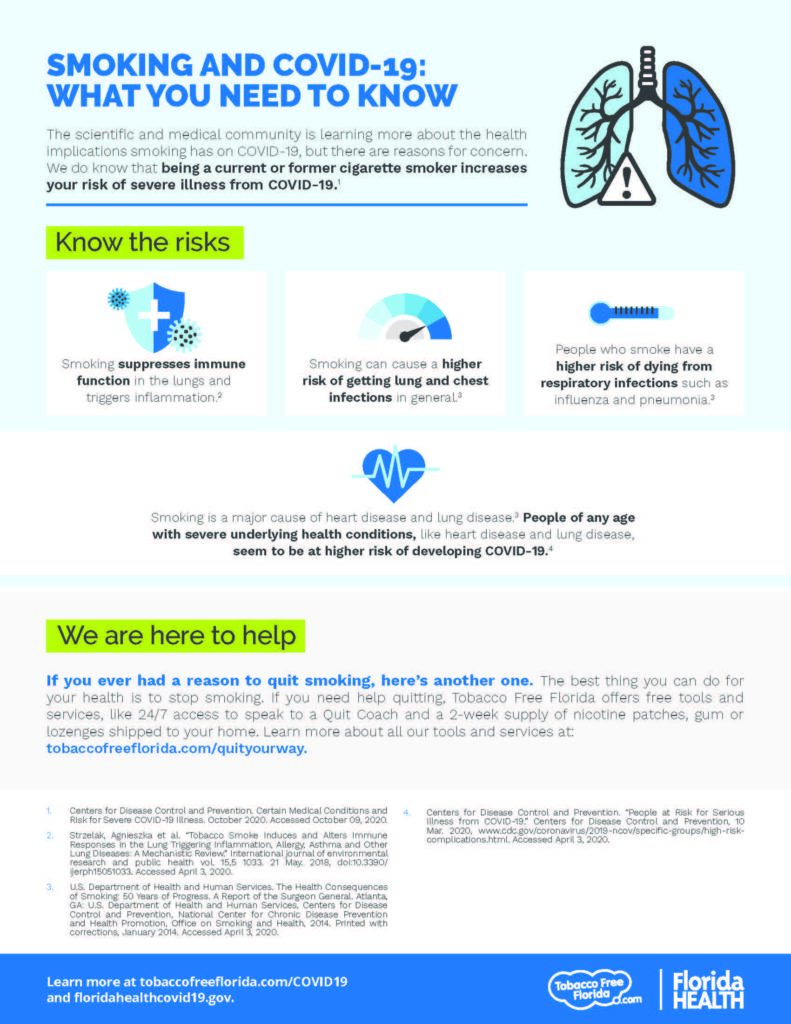Test Page
Viviendas libres de humo
Las políticas libres de humo para las viviendas multifamiliares benefician a todo tipo de viviendas, desde los condominios privados y edificios de apartamentos hasta las viviendas subsidiadas por el gobierno.
¿Por qué estar libre de humo?
Protege tu salud
El humo de segunda mano aumenta el riesgo de contraer cáncer o enfermedades cardíacas y de sufrir derrames cerebrales entre las personas que no fuman, 1, 2 contribuye a casi 41,000 muertes anuales en Estados Unidos. 3 También incrementa los riesgos en menores de sufrir de problemas pulmonares, infecciones del oído, asma severa y el Síndrome de Muerte Súbita del Infante (SIDS por sus siglas en inglés). 4, 5 La única manera de eliminar los riesgos de la exposición al humo de segunda mano en espacios interiores es dejar de fumar en estos. 6 Para aprender más sobre el humo de segunda mano, haz clic aquí.
Protege tu hogar
El humo del tabaco se desplaza con facilidad. Hasta el 65% del volumen de aire puede desplazarse entre las unidades, lo que expone involuntariamente a los vecinos al humo de segunda mano. 7 Por sí mismos, los sistemas de calefacción, ventilación y aire acondicionado no pueden controlar la exposición al humo de segunda mano; de hecho, podrían distribuirlo por todo un edificio. 8 Una política libre de humo puede reducir los daños causados a la propiedad por el humo y fuego, disminuir los riesgos de incendio causados por el tabaquismo y mejorar las tasas de ocupación.9, 10, 11, 12, 13,
Protege tu inversión
Una política libre de humo puede reducir los costos de las vacancias frecuentes y reparaciones. 14 Preparar una unidad vacante donde se ha fumado para volverla a ocupar puede costar hasta siete veces más de lo que cuesta preparar una unidad donde no se permite fumar.15 Una vez que se implemente una política sobre vivir libre de humo, los edificios también podrían ahorrar dinero con descuentos en las pólizas de seguro y en créditos impositivos. 16
Protección y defensa
No existe ningún “derecho de fumar” en sentido legal. Los residentes sí tienen el derecho de respirar aire limpio y libre de humo en sus hogares.
La Oficina de Tobacco Free Florida ha identificado más de 1,700 propiedades multifamiliares, más de 300,000 unidades de viviendas y 86 condominios en estados con leyes libres de humo. 17 Se ofrece asistencia gratuita para los propietarios de condominios, asociaciones y gerentes de propiedades que deseen implementar políticas sobre vivir libres de humo.
Encuentra la información de contacto de un asociado en tu área.
Lista de las propiedades libres de humo en Florida.
Buscar ubicación / Código postal
* Todo el predio = no se permite fumar ni adentro ni afuera; no obstante, podría existir un área para fumadores a un mínimo de 25 pies de distancia de los edificios y de las instalaciones exteriores.
** Parcial = al menos uno de los edificios del complejo es 100% libre de humo en interiores.
*** 100% interiores = la política de ambientes libres de humo se aplica a todos los espacios interiores, incluidos todos los espacios habitables.
La información sobre propiedades libres de humo en este mapa ha sido provista por la administración de la propiedad. TFF no puede garantizar la vigencia actual de estas políticas ni que estas se apliquen adecuadamente. Los residentes potenciales deben verificar la información sobre la política de ambientes libres de humo con la administración de la propiedad antes de firmar un contrato de arrendamiento.
Nos esforzamos por proporcionar información precisa. Si encuentras información imprecisa, envíanos un correo electrónico a [email protected] con la corrección que propongas.
1 U.S. Department of Health and Human Services. Let’s Make the Next Generation Tobacco-Free: Your Guide to the 50th Anniversary Surgeon General’s Report on Smoking and Healthpdf iconexternal icon. [PDF–795 KB] Atlanta: U.S. Department of Health and Human Services, Centers for Disease Control and Prevention, National Center for Chronic Disease Prevention and Health Promotion, Office on Smoking and Health, 2014.
2 U.S. Department of Health and Human Services. The Health Consequences of Smoking—50 Years of Progress: A Report of the Surgeon General. Atlanta: U.S. Department of Health and Human Services, Centers for Disease Control and Prevention, National Center for Chronic Disease Prevention and Health Promotion, Office on Smoking and Health, 2014.
3 U.S. Department of Health and Human Services. The Health Consequences of Smoking—50 Years of Progress. A Report of the Surgeon General. Atlanta: U.S. Department of Health and Human Services, Centers for Disease Control and Prevention, National Center for Chronic Disease Prevention and Health Promotion, Office on Smoking and Health, 2014.
4 U.S. Department of Health and Human Services. The Health Consequences of Involuntary Exposure to Tobacco Smoke: A Report of the Surgeon General. Atlanta: U.S. Department of Health and Human Services, Centers for Disease Control and Prevention, National Center for Chronic Disease Prevention and Health Promotion, Office on Smoking and Health, 2006.
5 U.S. Department of Health and Human Services. The Health Consequences of Smoking—50 Years of Progress: A Report of the Surgeon General. Atlanta: U.S. Department of Health and Human Services, Centers for Disease Control and Prevention, National Center for Chronic Disease Prevention and Health Promotion, Office on Smoking and Health, 2014.
6 American Society of Heating, Refrigerating and Air-Conditioning Engineers (ASHRAE). ASHRAE Position Document on Environmental Tobacco Smoke External. Atlanta: ASHRAE, 2010.
7 Center for Energy and Environment. Reduction of Environmental Tobacco Smoke Transfer in Minnesota Multifamily Buildings Using Air Sealing and Ventilation Treatments. (Minneapolis, MN: 2004).
8 U.S. Department of Health and Human Services. The Health Consequences of Involuntary Exposure to Tobacco Smoke: A Report of the Surgeon General. Atlanta: U.S. Department of Health and Human Services, Centers for Disease Control and Prevention, Coordinating Center for Health Promotion, National Center for Chronic Disease Prevention and Health Promotion, Office on Smoking and Health, 2006.
9 “Smoking-related Fires in Residential Buildings (2008-2010).” Strakosch/Vertical Transportation 4E The Vertical Transportation Handbook 13.6 (2012): n. pag. U.S. Fire Administration. U.S. Fire Administration. Web. June 2012. <https://www.usfa.fema.gov/data/statistics/reports.html>.
10 King, BA, RM Peck, and SD Babb. “Cost Savings Associated with Prohibiting Smoking in U.S. Subsidized Housing.” US National Library of Medicine National Institutes of Health. Elsevier Inc., June 2013. Web. 26 Oct. 2015. <https://www.ncbi.nlm.nih.gov/pubmed/23683981>.
11 Florida Smoke-free Multiunit Housing Survey, Florida Department of Health.
12 “Landlords.” Americans for Nonsmokers’ Rights. American Nonsmokers’ Rights Foundation, n.d. Web. 25 Jan. 2016.
13 “MISA Landlords.” MISA Landlords. Tobacco Program of the Michigan Department of Community Health, n.d. Web. 25 Jan. 2016.
14 King, BA, RM Peck, and SD Babb. “Cost Savings Associated with Prohibiting Smoking in U.S. Subsidized Housing.” US National Library of Medicine National Institutes of Health. Elsevier Inc., June 2013. Web. 26 Oct. 2015. <https://www.ncbi.nlm.nih.gov/pubmed/23683981>.
15 Case for Smoke-Free Housing by Colorado GASP.” My Smoke-Free Housing. Group to Alleviate Smoking Pollution, n.d. Web. 17 June 2016. https://mysmokefreehousing.org/landlordpresentation.html.
16 “Going Smoke-Free A Guide for Landlords.” (2016): n. pag. Make Smoking History. Massachusetts Department of Public Health, June 2014. Web. 3 Mar. 2016.https://makesmokinghistory.org/wp-content/uploads/2014/06/landlord_Guide.pdf.
17 Florida Smoke-free Multiunit Housing Survey, Florida Department of Health, December 2015.



